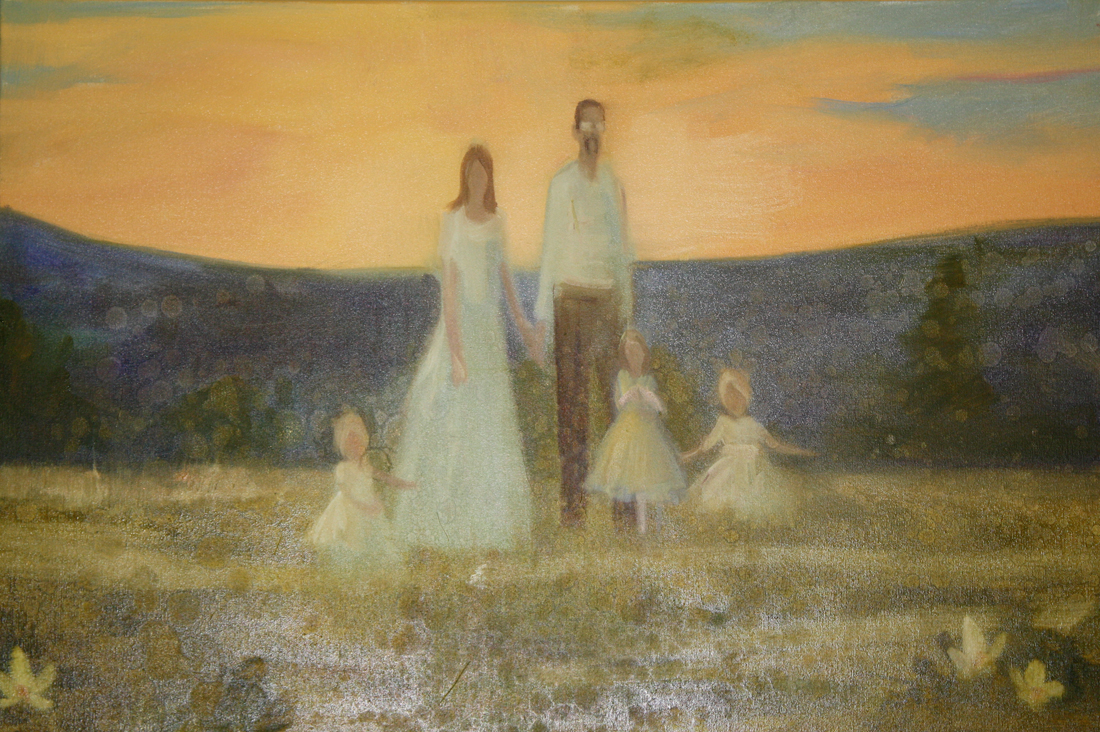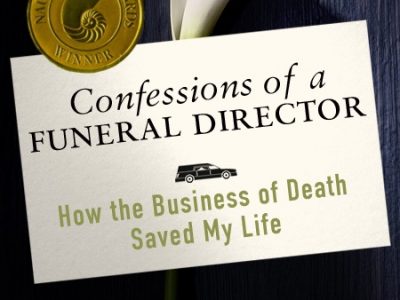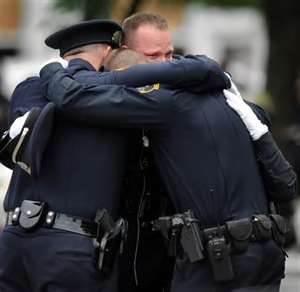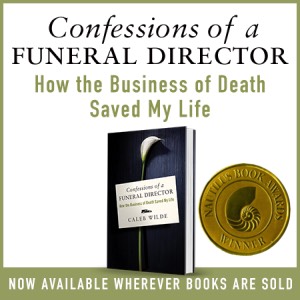Hazing Funeral Interns
I’ve never heard of hazing practices in the funeral industry (although I’m sure it’s happened). And, thankfully, I’ve never been hazed. But if it was common place to haze interns, here’s what hazing might look like in the funeral industry:
1.) At 2 AM in the morning you call out Intern Johnny and say, “Johnny, there’s a call at ‘such and such’ address. Mr. Johnson has died.” If we’re hazing Johnny, it’s assumed that Mr. Johnson’s death is fictitious, but the address doesn’t have to be.
The possibilities are nearly endless:
Mr. Johnson’s house could be the funeral director’s ex-girlfriend/boyfriend’s house.
Johnny pulls up to ex-girlfriend’s house, rings doorbell and waits. Ex scrambles to get dressed, opens the door and reluctantly says, ‘Can I help you?”
Johnny: “I’m here to pick up Mr. Johnson.”
Ex.: “Who?”
Johnny: “Mr. Johnson … a deceased family member of yours?”
Ex.: “I’m sorry, Mr. Johnson doesn’t live here … you have the wrong house.”
Awkward.
Or, if the funeral director isn’t so diabolical as to send intern Jimmy to his or her ex’s house, he could just send Jimmy to an abandoned house.
Or, Mr. Johnson’s house could be the funeral director’s friends house and your friend could pose as the dead guy, who is waiting to scare the living S*%# out of the intern. And this idea leads to the next hazing …
2.) You could lay in a body bag in the morgue awaiting said intern. From there, scare as you wish … preferably BEFORE said intern starts the embalming process.
3.) “You embalmed an alive body” is a pretty nasty thought; and an equally nasty hazing. Intern comes back from picking up a body at a nursing home (most nursing homes don’t have morgues … we literally take the body out of the bed … which can create confusion when there’s two or three or four people who sleep in same room). Intern embalms said body. Funeral director comes storming into the morgue, “Is that the body you just picked up from the nursing home?”
“Yes” says intern sheepishly.
“The nursing home just called and said they gave you the WRONG BODY!” says funeral director in mass hysteria. “The body on the OTHER SIDE OF THE ROOM was the one that was dead!!!”
“DID YOU EMBALM THE BODY!?!” says funeral director!
Intern’s face becomes ghostly pale and distorted.
“They said the body you picked up was JUST SLEEPING!” That person was alive!
“Quick, try CPR” says funeral director.
When CPR doesn’t work, the funeral director screams, “NOOOO!!! YOU KILLED THEM!”
“What?” says intern. “NOOOO!” says intern.
At this point the hazing begins to involve some sense of ethics. Does the funeral director push this hazing farther by suggesting that the intern must clean the morgue top to bottom so as to cover up said “killing” or does the funeral director stop the hazing and save the poor intern a heart attack?
4.) Or, the funeral director could just have the intern clean the morgue, pick up dead bodies in the middle of the night, yell at them all the time … oh, wait, that’s what happens anyways. And this is why there’s no rite of passage in the funeral business. There doesn’t need to be.
Owning my Grief after Three Miscarriages: A Guest Post
Miscarriage is a silent grief. We don’t understand why it happens. We don’t know how to talk about it when it does. Through my experience of three miscarriages and three healthy births, I am slowly learning to speak. Here is part of my story of learning to redemptively own my grief, and, in doing so, to try and offer comfort when others grieve silently.
Healing through words
Writing in my journal shaped my encounter with the miscarriages. I initially viewed our first miscarriage in 2004 as my wife Kristine’s loss, because she endured the physical trauma. Journaling about the miscarriage helped me acknowledge the hopes and fears of parenthood that I had held for our child. As I continued writing, I claimed each miscarriage as my own loss. I also claimed my identity as a grieving father, and Kristine’s identity as the mother of my children.
Writing about my confusion and grief enabled me to mourn the awfulness of your death. Not as an angry shout at the futility of life in a world that burned me one too many times. Nor as blind acceptance of actions from a distant God whom I’ve no right to question. But to acknowledge the loss of a life I was growing to love, the end of a journey that hardly had a chance to begin, the absence of a relationship I was looking forward to entering.
That lament created space for me to honor the value you brought to my life, verbalize the pain of your loss, and express the confusion of trying to come to terms with a side of life I didn’t expect to encounter. Talking about how I cried for you, for what you would bring to my life, was infinitely more valuable than finding a cure for the pain of your death.
I think I felt like I had paid my dues with the first miscarriage. Our second miscarriage forced me to face the possibility of never having children. During that time, I grappled with the symbol of the open hand, which had been foundational in my relationship with Kristine. I knew I must love her unconditionally, even though that would let her hurt me. I knew conceptually about loving my living children with the same open hand. I had never considered extending that open hand to a child still in the womb.
I had to decide whether to protect myself from being hurt by another miscarriage, or to voice my love for a child I might never meet. I also had to decide if I would extend an open hand to Kristine, who I resented for responding to the miscarriage differently than I was. Journaling helped me acknowledge the hope for my child’s life that was hidden deep beneath my cynicism about the miscarriage. I modified Albert Brumley’s hymn If We Never Meet Again as part of a liturgical farewell to my child.
Now you’ve come to the end of life’s journey. It turns out we’ll never meet any more, ‘till we gather in heaven’s bright city, far away on that beautiful shore. … Since we’ll never get to meet this side of heaven, I will meet you on that beautiful shore.
Farewell, Child, until we meet face-to-face for the first time. Go with my love. Dad
Healing through songs
The first miscarriage shocked me. The second miscarriage shattered my worldview. The third miscarriage brought me to despair. When we decided to try and get pregnant a fifth time, I let myself hope for new life in ways that I hadn’t when our daughters, Elise and Charis were born. I felt like that hope was thrown back in my face when we miscarried a third time. I wanted to give up completely on my hope for new life, and on the work Kristine and I had done to grieve together instead of alone. It hurt too much. I wanted the dreams to die.
I rarely write music but occasionally I have responded to turmoil in my life through music. The third miscarriage was one of those times. I arranged three texts from Celtic Daily Prayer into a song called The Caim Prayer. The song has two themes: The first is the cry that God would “lift me out of the valley of despair” that I entered when our child died. The second is asking for God’s leading “along a path I had never seen before” so that our dreams would not die.
Kristine and I also compiled about thirty songs – some individual favorites, and others that we listened to together. Expressing our pain, despair, and confusion to each other through these songs helped us to grieve both alone and together.
Healing through images
 The crocuses in our yard comforted Kristine after our first miscarriage. Like our unborn children, they are precious, beautiful, and alive for only a brief time. When we commissioned Indianapolis artist Kyle Ragsdale to paint our family for our 10th wedding anniversary, Kristine asked him to include a crocus for each unborn child. In many ways, that painting represents our hope for the miscarriages to be part of our lives … not as a dark blot in the center, but nevertheless woven into their creative fabric. Much of that hope is articulated in a letter that I wrote to all my children.
The crocuses in our yard comforted Kristine after our first miscarriage. Like our unborn children, they are precious, beautiful, and alive for only a brief time. When we commissioned Indianapolis artist Kyle Ragsdale to paint our family for our 10th wedding anniversary, Kristine asked him to include a crocus for each unborn child. In many ways, that painting represents our hope for the miscarriages to be part of our lives … not as a dark blot in the center, but nevertheless woven into their creative fabric. Much of that hope is articulated in a letter that I wrote to all my children.
All six of you walked an uncertain road with me as you have borne my burdens through the words of these letters. You will walk that road with me into the future. My unborn children, each of your presence in our lives continues to shape how your mom and I engage our world. You have challenged us to grant you dignity, and encouraged us to not let your deaths be the last word. Elise, Charis, and Clare, you are calling us into the joy of making new life grow. You will learn with us what it means to remember your three siblings, to live with open hands, and to see and speak peace into humanity’s wounds. So we will walk together, until the day when we all meet for the first time.
*****
About the author: Dr. Shawn Collins grew up in Kenya as a missionary kid. This cultural diversity built a foundation that influenced his faith and vocation. His work in the aerospace and energy industries integrates graduate degrees in mechanical engineering and anthropology. He regularly writes and presents on a variety of systems engineering, organizational behavior, and theology topics. Shawn lives in Indianapolis with his wife and three living children.
More information about Shawn’s book Letters to My Unborn Children is available online at www.letterstomyunbornchildren.com. It can purchased there, from Kirkhouse Publishers, or from Amazon. The ebook can be purchased from MemorEmedia.
An Unimaginable Decision: A Funeral Director’s Reflections on the Sandy Hook School Shooting
Today is the day that some of the obituaries for the victims of the Newtown Shooting will begin to be published. You can view some of those obits here. Grab a box of tissues before you read them.
What isn’t seen in those obituaries is that in order for them to be published, the parents and the families had to make one of the most difficult decisions of their life: to view or not to view.
As the details of the shooting were coming out over the weekend, I was particularly struck by one piece of information: the shooter had shot each of his victims multiple times (3 to 11 times). Many will interpret such information as farther evidence of Adam Lanza’s psychosis (and that would be a correct interpretation), but we funeral directors see it from a different perspective.
When there’s a tragic, sudden death, when there isn’t an opportunity to say one last “good-bye”, it’s a natural, innate response for the family to want to see their deceased one last time, just to see them face-to-face and say that final parting gesture. No matter how opposed you may be to viewing the deceased, those walls are torn down in a tragedy and “we just HAVE to see our little angel.”
As a funeral director, it’s often our job to let the family know just how bad the deceased is mangled. We then have to be honest with ourselves, “Can we reconstruct the severe trauma? Can we make this look somewhat normal?
The conversation goes something like this (and it assumes the family wants/needs to view):
Funeral director: “Your loved one experience physical trauma. I will do everything I can to make him/her viewable. But, you have to decide what you want.
One. You can have a private viewing at the funeral home and then cremate after you view. We can have a memorial service whenever you want.
Two. You can have a private viewing and then have a closed casket for the funeral service.
Three. You can have a private viewing and if you feel comfortable with the way he/she looks, you can have a public viewing as well.
What follows is the beginning of one of the toughest decisions of their life. They want to view, but do they really want to see their child with ….
Gun shot wounds are unpredictable creatures. They can be utterly destructive or they can be so small you wouldn’t even know the wound was there. My guess is that the wounds at Sandy Hook were of the former and not the latter.
And this is the nature of evil. It keeps taking and taking and taking. Not only was your son or daughter taken, but now – because of the trauma of these deaths, you have to make a decision you NEVER, EVER could even imagine. You could never imagine your child would be taken in this manner. You could never imagine that you’d have this insatiable desire to see your child. And you never thought you’d have to confront this unimaginable reality: your child may be too distorted to be viewed.
This shouldn’t be happening. This should never happen. But, over the past weekend this decision was made 27 times.
After the Sandy Hook Shootings: What Happens Next?
On Friday, December 14th, Sandy Hook Elementary experienced a tragedy that is creating a new normal for the town of Newtown, Connecticut.
The very same day as the school shootings I worked a viewing at a small Mennonite church in Gap, PA. As with most Mennonite churches, the pastor is bi-vocational. This specific pastor works as a part-time pastor and full-time salesman for an agricultural feed company. The area that he covers includes Bart Township, the same area that experienced the Amish school shootings in 2006.
We walked in to the church, set up the casket and flowers and I broke the news to the pastor about the shootings in Newtown, Connecticut. His countenance fell as he immediately connected the Sandy Hook shooting to the Amish School shooting. “I’ve been the salesman there for years. All the Amish families are my friends. Just the other day one of the mothers who lost a daughter told me she’s reminded of her daughter every time she sees children coming home from school.”
This, like all tragedy, finds a life of its own. Friday, December 14th marks the first day of a new normal for Newtown, Connecticut. In many ways, this new normal is a sad birth. In this blog post, I want to look at the practical side of how the next couple days and weeks will look for Newtown.
*****
TRAUMA RESPONSE: Thankfully, there are professionals who are being tasked this very moment in setting up response teams. The American Red Cross, various hospice programs and the American Psychological Association all have large scale trauma response teams who are trained to counsel children and parents in psychological and bereavement support, organize support groups and guide the community back to some type of semblance. The response teams will evaluate, support, offer guidance and help as the children, parents and teachers begin this dark journey.
Children do grieve. As long as there are relationships formed, there’s grief. And while the general public is not very adept at understanding a child’s ability to grasp death, those from the APA, Red Cross and hospice programs are. All the children will experience traumatic grief (CTG), many will experience post traumatic stress disorder (PTSD) and the hope will be that these children, like the youth from Columbine, will bond together and find deep fellowship in their grief, sorrow and pain.
Pragmatic questions like, “When do we restart school?” and “When should I go back to work?” will be guided by these wonderful angels from the response teams.
*****
BODY IDENTIFICATION AND FAMILY NOTIFICATION: By deduction, the families know whether or not their son or daughter, husband or wife is dead by the simple fact that they didn’t come home. But, their son or daughter, husband or wife may be so … that the bodies have yet to be identified.
Some families may be called into the hospital to visually identify their loved ones, other bodies may be too distorted and will need to be identified through other, more technical means. All the bodies will be studied, some autopsied, some given for organ donation and one – the shooters – will be looked upon with contempt by all who view him.
Once identified, the families will start the funeral arrangements.
*****
FUNERAL ANNOUNCEMENTS: There’s only one funeral home in Newtown, Connecticut. And while I doubt the Honan Funeral Home will bury all the victims and the shooter, they will probably bury many of them. From what I can tell by the obituary section on their website, the Honan Funeral Home is not a very large funeral home. In fact, they’ve only advertised 12 obituaries in the past year. They will need help as they could very well have twice their yearly volume in one week. And thankfully, per this article, other surrounding funeral directors are offering their help to Honan.
Any funeral home and funeral director who works with these families will need their own type of support over the months to come. Most of us don’t enter this business because we’re cold hearted; rather, we enter it because we’re generally big hearted. These tragedies hurt us as well. Embalming the body of an elementary school student that has been autopsied and shot is enough to permanently disturb anyone, including a seasoned funeral director.
Questions of “how will this family pay for this funeral?” are likely taken off the table, either by the funeral director’s generosity or by nonprofits like Bury a Child (run by my friend Nancy Burban, who lives in a neighboring town) who are already donating caskets and raising funds for funeral expenses of the children (UPDATE: Per Nancy, all the funds have been raised to cover the funeral expenses of the victims).
Police and other first responders will carry a burden that no man or woman should ever carry. They have seen images no one should ever see.
Pastors, too, will experience many sleepless nights as they prepare words for an unspeakable event.
*****
THE NEAR FUTURE: The funerals will be large, sad and no doubt full of horrible theology explaining how we can’t question God, how God will turn this into good, etc. Yet, despite the horrible theology, many churches will find themselves full. Churches will comfort some families. The community will become more closely knit. Memorials and monuments will be built to honor the memory of the children and the teachers. School will eventually reconvene. On December 14th, 2013 CNN will hold a special marking the one year anniversary of the shootings. And in five years the world will forget.
But the pain will linger. The grief will remain in the hearts of the parents and their families. Time will not heal these wounds. This is the new normal for Newtown, Connecticut.


